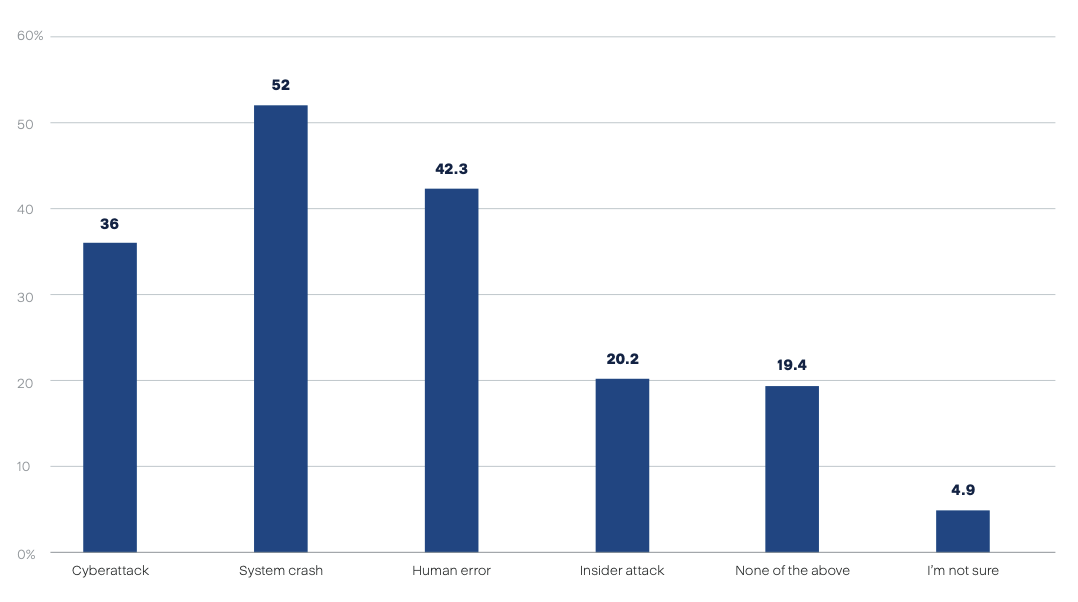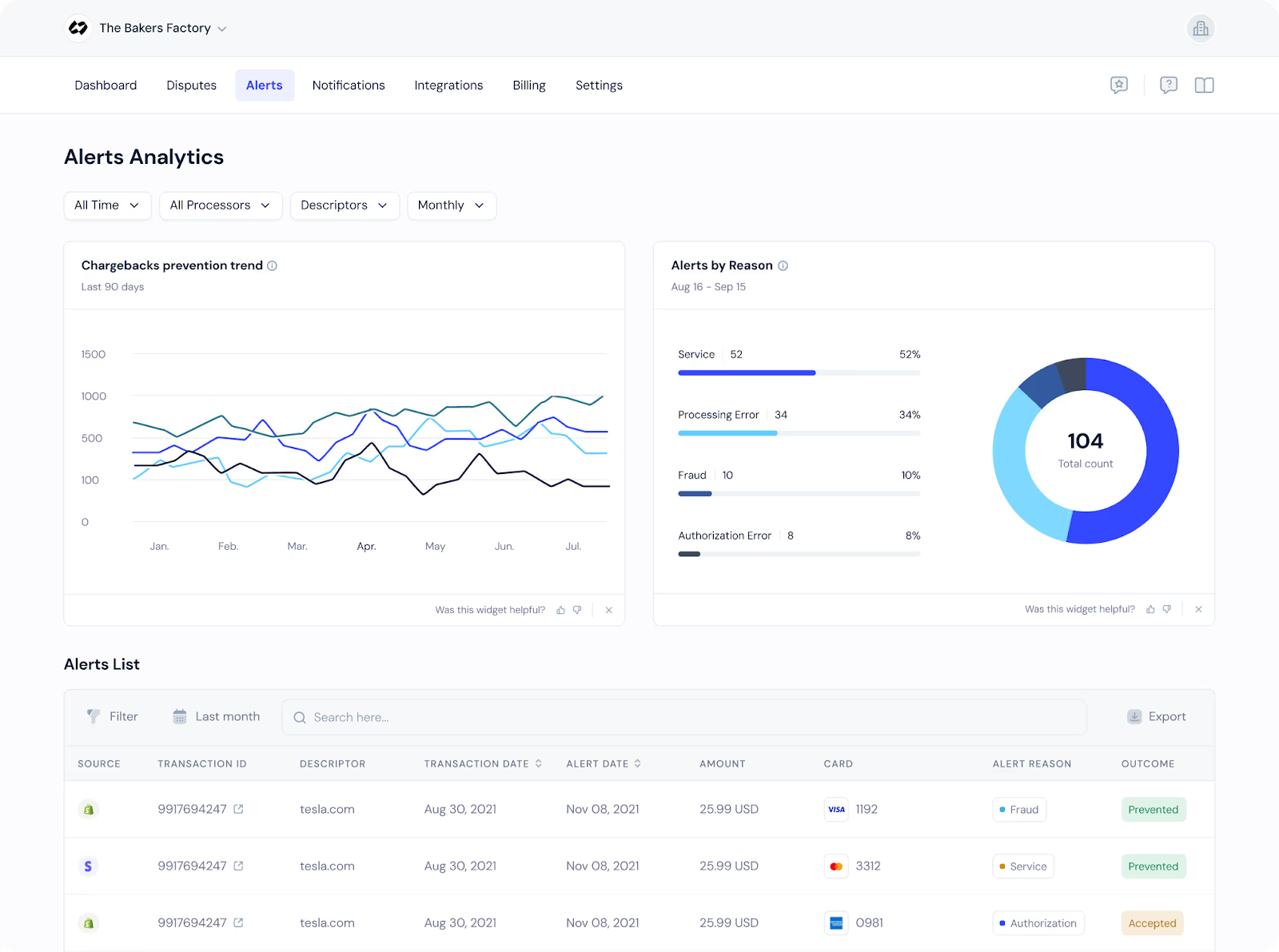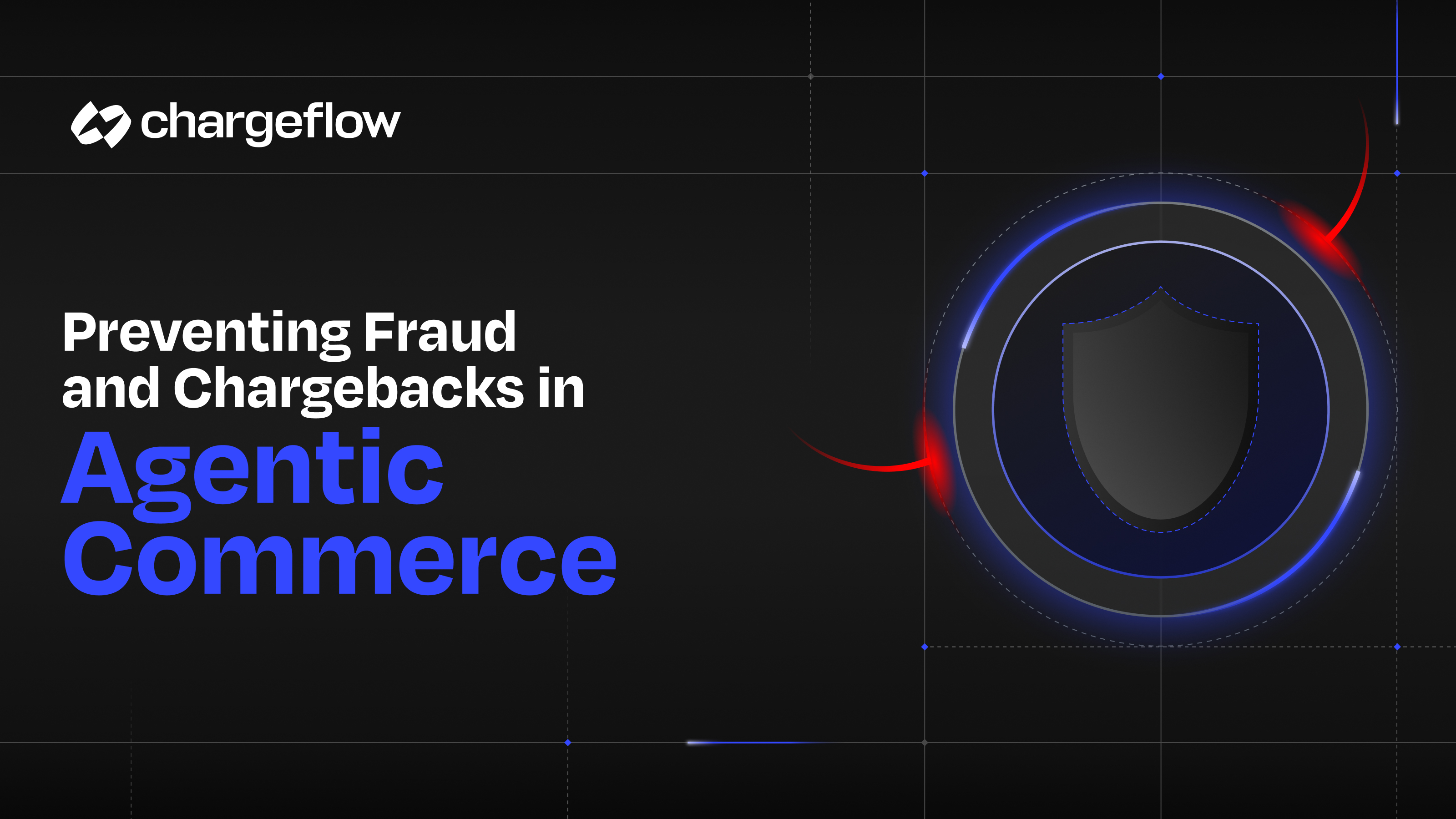Why Downtime Isn’t Just a Tech Problem — It’s a Chargeback Problem

Chargebacks?
No longer your problem.
Recover 4x more chargebacks and prevent up to 90% of incoming ones, powered by AI and a global network of 15,000 merchants.
Downtime damages trust and drives chargebacks. Learn how site reliability impacts customer experience and revenue.
You might think a few seconds of downtime are harmless. But to a customer trying to complete a purchase, it’s the moment they lose trust, and you risk losing revenue.
The average downtime cost was $5,600 per minute a decade ago, but recent studies show it to be around $9,000 per minute.
It's a problem that affects all businesses, whether they are E-learning platforms, E-Commerce shops, or other niche platforms. Because when a site goes down or slows down, users don’t file complaints; they bounce.
They don’t come back. And worse? They sometimes file chargebacks, not always out of fraud, but because they no longer trust the transaction.
Site reliability isn’t just about servers staying up. It creates a positive impression on customers that you’re available at a given address. And when customers lose trust, chargebacks often follow. Not out of fraud, but because the experience felt broken.
Let’s explore why it matters.
Why is Site Reliability a Trust Metric Now
There are many reasons for downtime, with the highest (52%) being a system crash. While you may say it's out of your bounds, there’s a price to pay.

Even if a technically functioning site takes too long to load, it is perceived as broken. If a user has to go through that, you must build reliability.
Several factors contribute to site reliability.
The Shift in Customer Expectations
Amazon delivers in 24 hours, Netflix can stream episodes in 4K without buffering, and Uber arrives with a tap.
So, customers expect the same fluidity everywhere else. Whether they’re ordering a t-shirt or managing their finances, the digital experience has to "just work."
Such refined expectations could negatively impact the business downtime beyond just cost.
Micro-failures Mean Macro Distrust
It takes one small issue to lose a customer: a page that freezes, a cart that stalls, or a payment that loops. Such issues may look small on paper, but their impact is huge.
Here’s why:
- 47% of users expect pages to load in 2 seconds or less
- Slow loading time leads to customers doubting if the business is genuine
- Downtime affects perception, even if the rest of the journey works fine
- Bad digital performance leads to poor reviews
- Trust once lost is hard to rebuild, and often more expensive than acquiring a new customer
Industries Hit Hardest by Downtime
Many businesses across various industries operate on a tight timeline. Multiple activities, such as orders, bookings, and payments, happen in real time, which may require implementing fraud prevention practices as well.
And when is there even a slight delay? The whole system starts to crumble.
For example, a print-on-demand business that enables users to create customized merchandise using several printing techniques like DTG printing, DTF, sublimation, and more. Here, users can customize their t-shirts in real time by adding text, tweaking colors, maybe uploading a personal photo or design. A 10-second lag during that process would mean preview not loading, designs being reset, or worse, the cart clears out.
Sure, the buyer is irritated and disappointed, but that’s where it can turn into a severe distrust.
High Risk Verticals: Where Downtime Hurts the Most
Below, we’re exploring a few major industries that can get severely impacted due to downtimes:
E-Commerce
When shoppers land on a site, they come with intent—sometimes to browse, often to buy. But that intent is fragile. If the site slows, freezes, or glitches at any point between product selection and payment confirmation, you risk losing that customer.
We aren’t talking about bounce rates because downtime introduces uncertainty. Customers on e-commerce sites wonder if their order went through or if they were charged twice. Worse, they question whether they can trust your store again. These moments, when left unresolved, lead directly to chargebacks. Proactively reducing chargebacks also means ensuring your site performs consistently — before uncertainty ever starts.
Global CNP fraud losses alone will reach $28.1 billion by 2026, and chargebacks are a direct result of both fraud and transaction ambiguity. This is why you need to optimize customer and order management as a part of streamlined E-commerce operations.
Online Education
Those offering virtual classes may suffer a reputation loss when a platform suddenly freezes while the teacher is mid-sentence or the student is ready to answer.
Students don’t wait around for the page to load again. They drop off. Worse, if this happens too often, they lose trust in the course.
An education platform demands credibility and learning outcomes, which can be compromised by downtime. If students feel shortchanged, they will undoubtedly demand refunds — and in some cases, file chargebacks if they feel they didn’t receive what they paid for.
SaaS Tools
SaaS platforms don’t just sell features but demonstrate reliability. Core functions like dashboards, reporting tools, or payment integrations may stall or crash during downtime.
And when businesses rely on your tool to serve their customers, downtime also leads to a real financial risk. That’s why even a minor downtime for SaaS can kickstart a chain reaction: user churn, downgrades, refund requests, chargebacks, and a dent in monthly recurring revenue that’s hard to recover.
How To Build a Resilient System
It begins with pivoting all your business operations to achieve zero downtime, with a deliberate focus on robust design, optimizing user experience. Downtime tracking software is a good start, providing a quick snapshot of issues causing trouble and helping you find quick fixes.

You don’t just set up a few alerts, but take the following actions:
From Monitoring to Maturity
Building resilience that almost guarantees zero downtime begins with real-time awareness and flexible architecture.
Here's what that looks like:
- Real-time alerting to detect issues as they happen, not hours later.
- A backup will follow redundant systems, so one point of failure doesn’t shut everything down. For example, many organizations practice backing up from Proxmox to NAS or VMware to NAS to protect critical data in virtualized environments.
- Autoscaling is a must because you need the infrastructure to adjust with traffic and handle sudden spikes without performance dips.
Focusing on Team Readiness
When you are moving towards reliability, you don’t just think of code. Downtime also negatively affects the speed and accuracy of your team’s response and recovery plans.
This is where you can implement skills-based learning, allowing your team to gain practical, hands-on experience. It prepares them to overcome issues that may result in downtime because reading the manuals won’t make a difference.
They need to be trained through simulations that mimic real outages to build muscle memory and give them the real feel of fast turnaround.
Here’s an example of teams and the sort of practice they need:
- SRE teams should have sufficient practice in restoring systems under pressure using production-like scenarios.
- DevOps teams should be ready to simulate failures in CI/CD pipelines and rehearse rollback plans.
- Support teams must be prepared to handle ticket surges with calm, precise communication.
A highly realistic training prepares them for a more effective response where customers are less likely to notice anything went wrong.
Ongoing upskilling like this shortens the mean time to resolution and helps implement effective chargeback management, keeping teams sharp.
C. Why People and Process Matter
Even the most advanced tools can’t compensate for gaps in communication or unclear escalation steps. Ultimately, you’re preparing them for an exceptional post-service experience which needs people at the heart of the process.
Strong systems combine automation through chargeback management tools and skill-based human coordination.
Here’s why tools alone won’t cut it:
- Monitoring alerts don’t help if no one knows who should respond.
- Team silos slow down investigation and duplicate efforts.
- Lack of post-incident reviews means repeat failures.
- Teams get stuck in trial-and-error mode without a defined recovery protocol during critical moments.
Making a Change: From Frustration to Chargebacks
Let’s understand what happens when a customer encounters the slightest glitch on your website. It’s not just about an error message or a frozen screen. The real cost begins the moment their experience feels broken.
Customers rarely stop to ask what went wrong on the backend. They judge what they see. And frustration quickly builds when the flow of their checkout, payment, or confirmation is interrupted.
What starts as hesitation turns into doubt, and in a matter of seconds, your credibility is damaged – which again will often lead to chargebacks.
The Immediate Impact
Downtime or slow performance disrupts transactions, but it also introduces ambiguity, which is where trust erodes.
- If a cart page takes too long to load, customers may abandon their purchase without completing it.
- In the event of delayed confirmation after entering payment details, the customer is prompted to repeat the transaction.
- When a customer encounters a spinning loader during checkout, they will not know if they were charged.
Each of these points presents an opportunity for misinterpretation. From the customer’s point of view, if something feels off, it probably is.
From Customer Confusion to Financial Loss
When users are unsure whether a transaction was successful, they often do not contact your support team. Many directly head to the bank if your platform fails to offer a clear status update or follow-up email.
That’s when a simple issue can turn into a refund request — or worse, a chargeback. If your support team doesn’t respond quickly enough to intercept the situation, or if it isn’t easy for the customer to get clarification, you’ve lost the window to resolve it in-house.
Every one of these interactions increases your chargeback ratio. And if that ratio becomes too high, processors start flagging your business as high-risk.
Chargebacks as a Symptom of Site Instability
Industry data shows that at least 75% of chargebacks were friendly fraud cases where customers genuinely believed something went wrong. The platform might think everything is processed correctly, but the user’s experience said otherwise.
Some chargebacks also stem from dissatisfaction, and as a merchant, you’re exposed to the legal risks of chargeback fraud.
In cases where a poor or unreliable user experience leaves customers feeling misled or shortchanged. That’s when chargebacks shift to disputes, which not only put your revenue at risk but also come with added costs: processing fees, time spent contesting claims, and strained relationships with payment providers.
Conclusion
Every second your site lags or experiences downtime, you’re not just losing revenue but impacting its reliability and brand identity. You’ll need to move beyond simply ticking the uptime metrics or resolving backend errors to provide the necessary confidence for users.
People expect digital experiences to be smooth, fast, and reliable. When that expectation is unmet, they don’t wait around or ask questions. They leave. Sometimes, they reverse charges and often leave scathing reviews. Worse, they don’t return. If you want fewer chargebacks, you need more than fast servers — you need customer confidence at every click.
That’s why managing site performance is essential to protecting your customer relationships — and keeping your chargeback ratio in check.

Chargebacks?
No longer your problem.
Recover 4x more chargebacks and prevent up to 90% of incoming ones, powered by AI and a global network of 15,000 merchants.






























.png)








